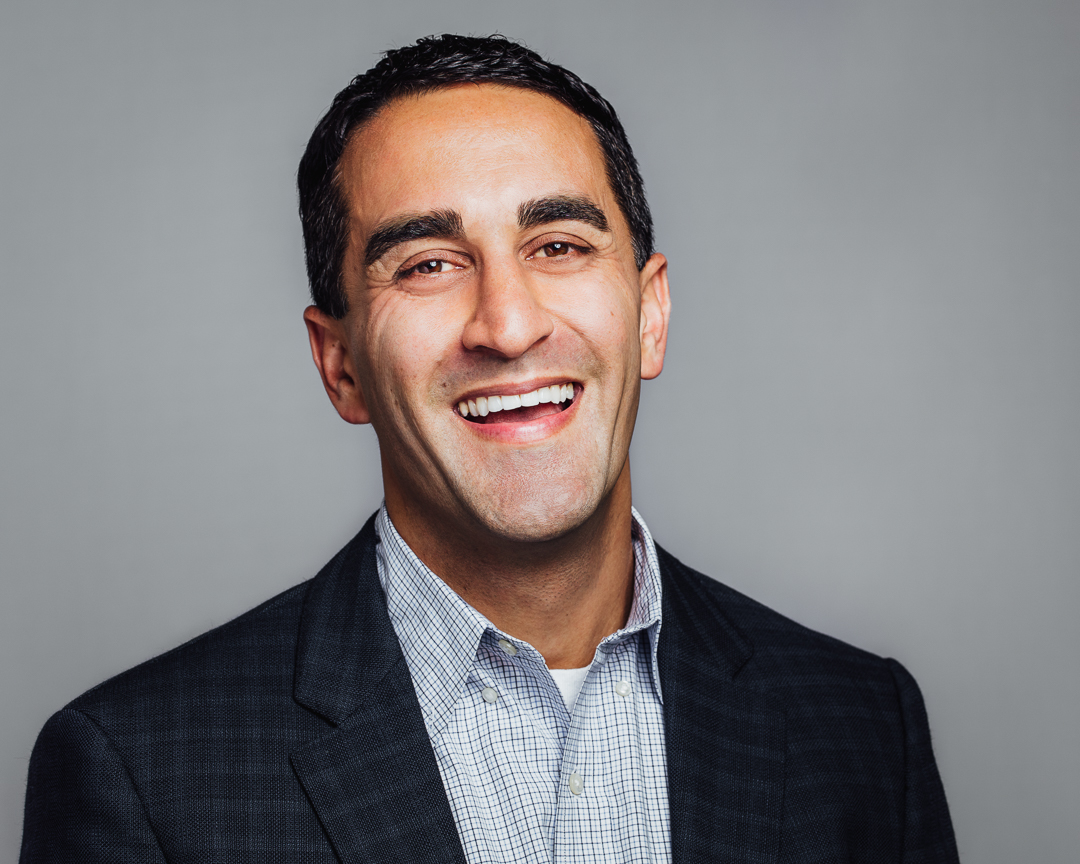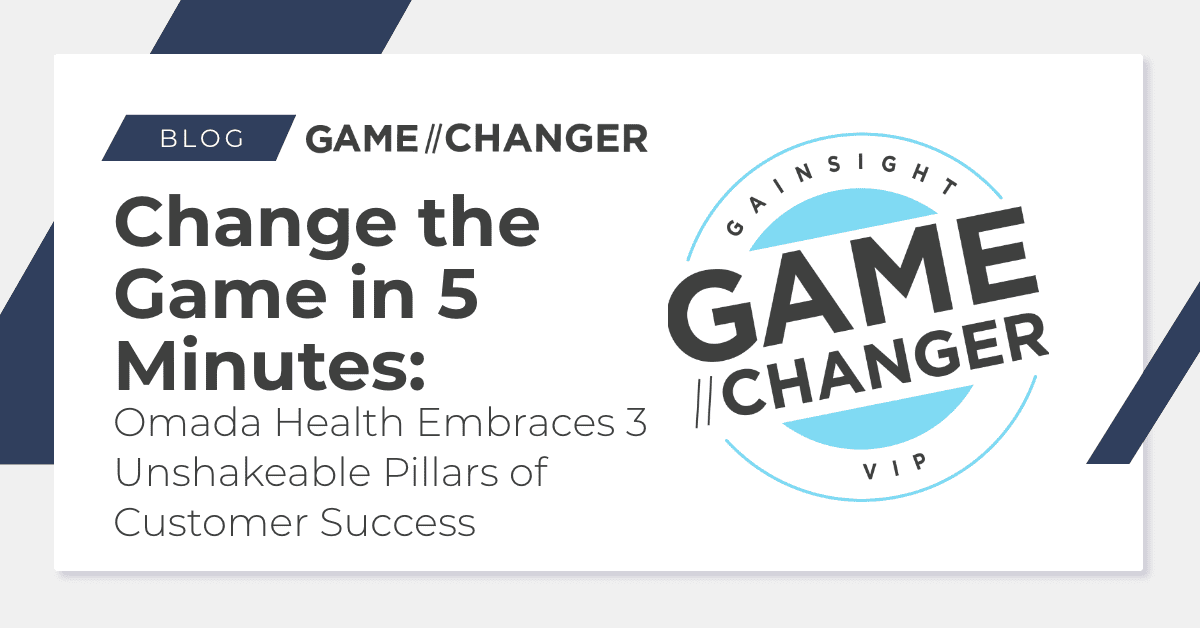
Welcome to our Change the Game in 5 minutes Series. In these conversations, we talk with customer success leaders who are role models for others who want to serve customers better. Arvind Stokes, VP of Customer Success and Support at Omada Health, certainly fits the bill. Today we find out why the “digital hospital” needed to change the way it managed clients, how Arvind led the customer success transformation, and what’s happened at Omada Health as a result.
Nick: Arvind, thanks for being here today. Before we talk about customer success, let’s take a moment to learn something about you. When you were a kid, what did you dream you’d be when you grew up?
Arvind: I went from a fireman to a doctor to a professional tennis player. Tennis was the only thing I was semi-decent at. The funny thing was, I didn’t want to win trophies. My dream was to win a big tournament and give a speech where I thanked my parents and told them how proud I was to be their son.
Nick: Wow. I’d love to hear more about that amazing story … but let’s turn to customer success. Tell us about Omada Health, the challenges the company was facing, and how you approached the transformation journey.
Arvind: At Omada, we provide customized digital programs to help people prevent and manage chronic disease through healthy habits and lifestyle changes. Our customer success teams cover small, mid-market, and enterprise, with customer operations and customer support teams. We have 32 people and counting.
When I joined the company in 2018, I knew how important it was for everyone to be thinking about customer experience. The C-suite team was focused on it already. At the time, we had a small group of eight people. We didn’t have an org structure laid out with operations, and the customer experience group was kind of fragmented. One of the first things we had to think about was, okay, we’ve got this great product, and we hire amazing, high-aptitude people who are caring and empathetic. How do we build a cohesive team with a coherent strategy that also represents our company mission? Fortunately, everyone agreed that customer experience had to be first and foremost, along with the participant/employee experience in our program.
Nick: You had to set customer success goals for those two groups: business customers vs. employees. What was that like?
Arvind: We faced some exceptional challenges with a very spread-out channel component. Instead of B to B or B or C, it’s B to B to B to B to C, with channels selling to pharma as well as massive health plans like Cigna, Aetna, and Blue Cross. We have enterprise customers like 3M and Costco too. We also have pull-through partnerships from the health plans that are important. The last component, which is super-critical to our mission, is the people in Omada’s programs.
Trying to think about a holistic definition of our customers was a challenge. It was also challenging to figure out how to bring continuity between each of those channels so that people understand what we represent and then reflecting it in our key performance indicators (KPIs). It’s an exciting and tough challenge.
Nick: Can you elaborate on the KPI concept for the participant side?
Arvind: We’d have problems if we weren’t aligned looking at the same customer satisfaction metrics like CSAT, NPS, and churn. We needed to agree on what questions we’re asking and what benchmark we’re setting. We recognized that customers want to know about the participants’ experience. That means measuring qualitative and quantitative metrics within each channel to get a cumulative type of score and experience.
This is a crucial point to understand fully. Teams can dangerously get siloed by just focusing on training strategies and planning within the different channels. But there’s an interaction between your business customers, who want all of their employees or members to have a great experience, and your participants. It’s a balancing act. My job is to find the balance by continually asking, “Am I thinking about it the right way?”
The next question is, how do we bring it all together through data? At Omada Health, we think in terms of very big data.
Nick: How did Gainsight help you change the game?
Arvind: Gainsight was part of the plan from day one, and it was one of our three key pillars. First, we needed a true capacity model, so we’d have clarity on adding resources. Second, we needed an org structure so we could plan how we were going to grow. I knew we were going to at least double or triple the team since we were adding 1,000+ customers in one year. I brought in regional operations leadership to get laser-focused on how we were cultivating and expanding with revenue within each book of business and region.
The third pillar was Gainsight, which would bring transparency to strategic account planning and workflow optimization to increase scale. If I can generalize for a moment, many people in customer success don’t do a good job bringing specific customer elements to life. Some things can’t be fully tracked with a sales CRM. There has to be a single platform where your customer health score and strategic account planning are all in one place. I’m really excited that Omada Health invested in Gainsight so early on.
Nick: How did you prioritize investing in the CS solution at that time?
Arvind: Investing in software is a super intuitive way for people to maximize things like KPIs and CSAT scores without needing a Ph. D. to know how to set up and administer the program.
One of our specific goals was to increase our response rate. It was hovering at around 30%, which is adequate for surveys, but we wanted to get up to 50% in year one after launching Gainsight and eventually 70%+. With Gainsight, we personalized the customer content and messaging through the CSM, and in six months, we met our goal at 50%.
Outside of those KPIs, our big focus is customer health: how to measure it and apply the science, how to scale the consistent customer experience, what’s the CSAT score. We want people to access this entire strategy from their phone and get a two-minute synopsis right away.
Nick: That’s great. Are there other specific elements of Gainsight you’ve found particularly valuable?
Arvind: Yes—the health-scoring playbooks and the CSAT surveys. If you don’t figure out early on how to leverage CS software to really operationalize and maximize the productivity of your team, then you’re going to take the CSMs away from what they should be fundamentally focusing on, which is cultivating authentic relationships and expansion opportunities. Your CSMs need to be spending their time with the customer and understanding what makes them tick while serving as an extension of their team. You need software that can do a lot of the heavy lifting for them through features like playbooks and surveys. Otherwise, you’re asking too much of people.
Nick: Given the current downturn, is Gainsight changing how you manage your team or communicating with customers?
Arvind: Two things come to mind. First, like your team at Gainsight, we understand the importance of leading with “heart” right now. We’re not trying to gouge money from our customers; we want to figure out how to genuinely add value. We’re having lots of conversations about supporting our customers without asking for anything in return.
Second, we’re all wondering about what models will work in a post-downturn era. We’re already digital, so how can we make it even better? One of our key differentiators is our amazing health coaches and clinical teams. Moving forward, should we think about a model that’s more like telemedicine? How can we better help people in terms of both recovery and resilience?
Nick: When you think about getting even more advanced in the future, what’s on your whiteboard?
Arvind: I’ve always been excited to use Gainsight to test out predictive churn analytics. Whether you’re looking at gross or net revenue retention, everyone cares about that. We’re very fortunate because, as our team grows to 50+, we’ve got the hiring profile down. We’ve hired exceptional people across the board and built a diverse team; everyone is very focused on cultivating authentic human connections with our customers and with each other. That’s helped us achieve exceptional results, so we need to continue fostering this dynamic as we rapidly grow. We’ve got a potential IPO track in our future, so we always have to think about where the ball could drop with scale, customer experience, and our team’s engagement.
Here are some other numbers I’m very proud of because they are incredibly hard to achieve when growing as fast as we are, and with the number of customers we’ve added: achieving CSAT >95%; having annual logo churn <3%; adding 1k+ customers in one year, and moving closer to 70 for NPS.
We hope the things we’re building into Gainsight will be foundational to improve how we track and understand customer behavior. You have to have software that does that, and I’m looking forward to putting the platform to the test.
Nick: I love it. It’s clear to me that you’re not just changing the game with your team, you’re also changing the game for people’s health and their lives. It’s awesome. Arvind, thank you so much for sharing your story with me today.
